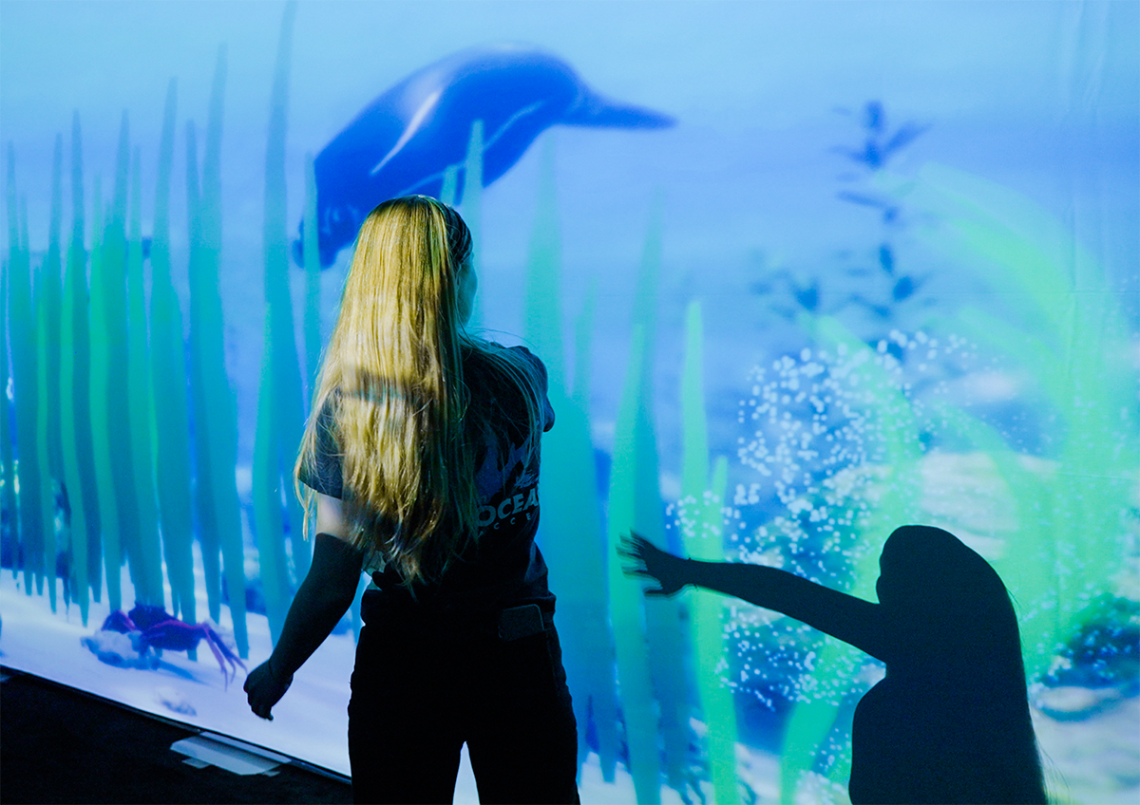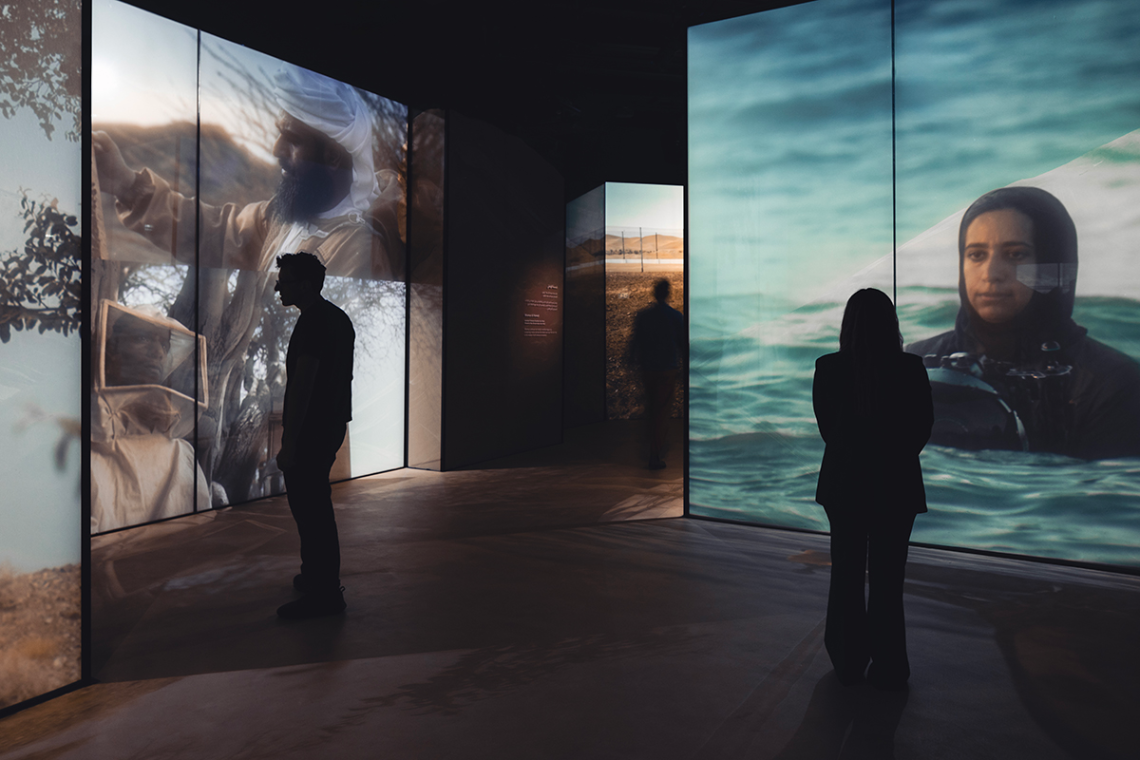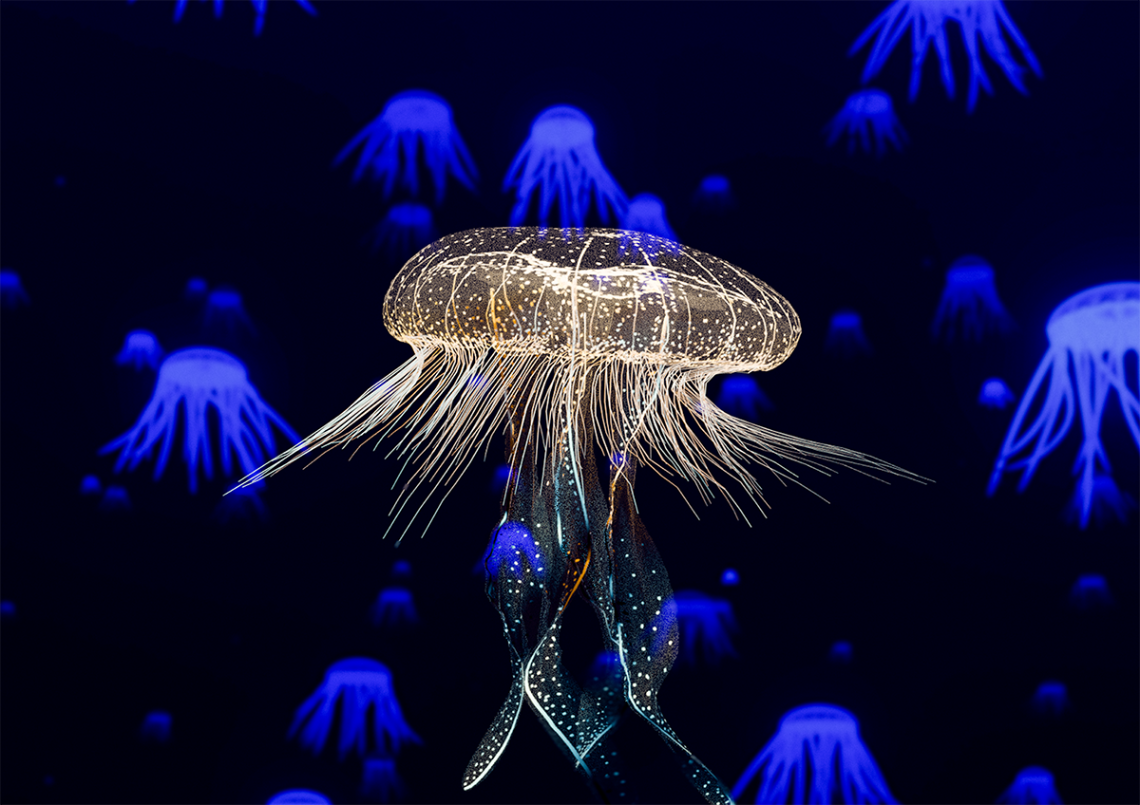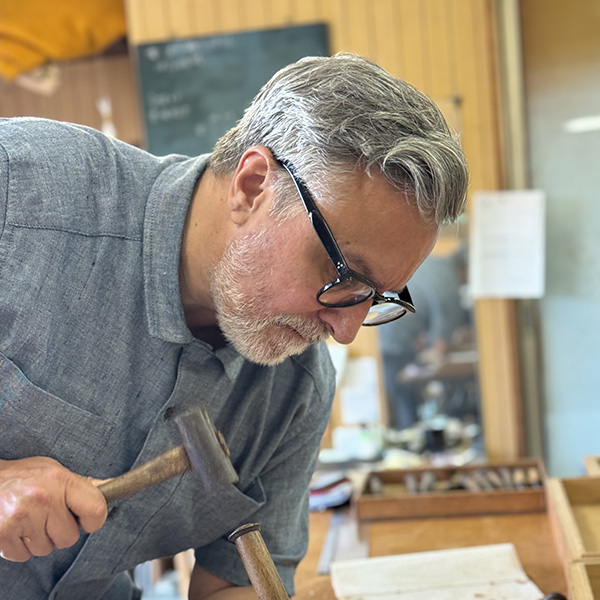Main image: SAM AI Experience at Nxt Museum, Amsterdam
Photography: Silvia Boschiero
Founded in 2000, Tellart is an experience design studio that blends future foresight, design craftsmanship, and emerging technology to create innovative ways for people to explore, understand and enjoy the world. With a global team of strategists, architects, designers, engineers, writers and filmmakers, Tellart believes that true invention arises from not only addressing human needs and business opportunities, but also discovering the unique strengths of raw materials.
Celebrating ocean health
“Today marks a proud moment for Tellart as we participate in Climate Week in New York City with our installation on ocean health,” Matt begins. “It’s a 360º interactive cinema experience that toured around the world with The Ocean Race last year and has now landed here, engaging a very enthusiastic crowd. Our creative client partner, 11th Hour Racing, and I are both from Rhode Island, where I grew up sail racing and developed a deep connection to the sea. It’s rewarding to bring this collection of ideas about how the ocean supports all life on Earth back home to the U.S.”

Photo: One Blue Voice — The Race Below | Design: Tellart and 11th Hour Racing
Expo 2025
“When we were the lead experience designers for the host pavilion at Expo in Dubai, I thought we had reached the peak of our design practice, following in the footsteps of many great studios that have shaped the World's Fair for over a century and a half. This year, I have spent months in Japan, the Philippines, and the Netherlands (where I now reside), immersing myself in art, craft, and food cultures.
Our research trips — from learning about circularity to diving in the ocean — deeply inform our work. All of this serves to inform and inspire our current work as lead guest experience designers for the Philippine Pavilion and Netherlands Pavilion at Expo 2025 in Osaka, Japan, among other exciting projects.”

Photo: The UAE House of Sustainability | Design: Tellart
Story-first approach
“For over a decade, clients came to us seeking magical new possibilities for creative communications using bleeding-edge technologies,” Matt reflects. “We hacked everything from chairs to buildings to orchestras, transforming them into automagical web-connected performances. In these early projects, meaning often took a backseat to sensationalism.”
“In the past decade, we have broadened our approach from the ‘user-centered’ design we learned in the ’90s to a story-first and life-centered design process. At Tellart, we have Story and Form teams — every form serves a story, and every story works to foster empathy, stewardship, and policy aimed at understanding our world as an interconnected ecosystem. The Race Below project, a recipient of this year’s European Design Awards, opens today in New York City and exemplifies this. Did you know that every other breath we take comes from the sea? Or that seagrass sequesters more carbon than the Amazon? We bring these facts about our natural environment to life, making them vivid and interactive so that people can appreciate our world in new ways.”

Photo: One Blue Voice — The Race Below | Design: Tellart and 11th Hour Racing
Learn how to navigate
“We were originally founded on principles learned in the metal, wood, glass, textile, ceramic, and other shops where we trained at Rhode Island School of Design (RISD). We believe that design is an act of discovery, not the prescription of a creative genius sent straight from thinking to a factory. We explore technologies — both digital and physical — together, by hand, in our workshops. We research, write, and then reimagine the experiences we’ve had in the field and the stories they tell as we build sketch-models and prototypes. Throughout this process, we listen more than we talk. We allow the story, materials, and tools to guide us. I often tell young teammates, ‘Don’t set end goals; learn how to navigate’”.
“Every form serves a story, and every story works to foster empathy, stewardship and policy aimed at understanding our world as an interconnected ecosystem.”
–
Matt Cottam, Tellart
Black boxes
“The act of giving story and form to raw facts and information is more important than ever, as our world and the technologies we create have become more complex and opaque”, Matt concludes.
|
“It is increasingly difficult to distinguish the digital from the real. We risk missing out on significant benefits for all life due to fears fueled by politicians, the media, and brands — and we are equally at risk of embracing technologies without fostering a shared understanding of their potentially destructive downstream effects. Tellart makes these black boxes of the present and future both visible and tangible. We transform them into interactive experiences that build understanding and inspire debate.” |
 Photo: Matt Cottam
Photo: Matt Cottam